There are a variety of ways to switch to an organic landscape plan. First, survey the areas and plants that require the most chemicals and look at options for reducing in those domains. It’s likely that your lawn will be at the top of the list. There are many products available for lawn pesticides, herbicides and synthetic fertilizers. Regular use of these chemicals will throw your landscape into a cycle of dependence on them, and it may be best to phase out chemicals in different places over time. Here are some ways to cut back.
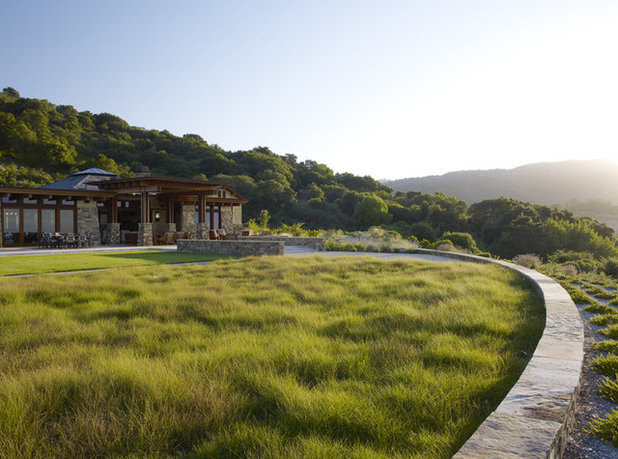
Christopher Yates Landscape Architecture
SoilThe foundation of a healthy landscape is healthy soil. This is the mantra of many landscape architects. An organic garden relies heavily on compost, because it’s the best method of returning decomposed organic matter back to the soil. Compost tea, manure tea or broken-down compost from your yard waste bin will work magic on your plants.
Other ways to help create a healthy soil ecosystem include the use of organic fertilizer, like fish emulsion and adding mycorrhizal fungi to your soil. The fungi benefit plants by helping them to absorb more nutrients. It’s a natural process that you can foster in your own soil to help your garden thrive.
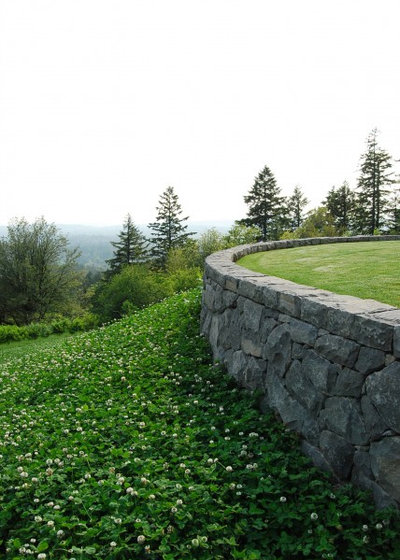
Samuel H. Williamson Associates
Living fertilizer. White clover (
Trifolium repens) is a nitrogen-fixing low ground cover plant that adds nitrogen to the soil. It does well in nutrient-poor soils and can make a lovely lawn addition. Add clover to your lawn and let the bees and pollinators have a great time.
Clover is very easy to maintain and looks graceful as a naturalized clump at the edge of a lawn or planting bed. Adding a “living fertilizer” like clover contributes to a healthy soil that is rich with nutrients.

Swick's Organic Landscaping
LawnThis is the obvious first place to consider reducing chemical applications. Lawns make up a large percentage of American homeowners’ landscapes. I love lounging on a lush lawn, and it’s a great surface for kids and pets to run around on. This image, from Swick’s Organic Landscaping, shows a traditional lawn that is maintained using ecofriendly methods.
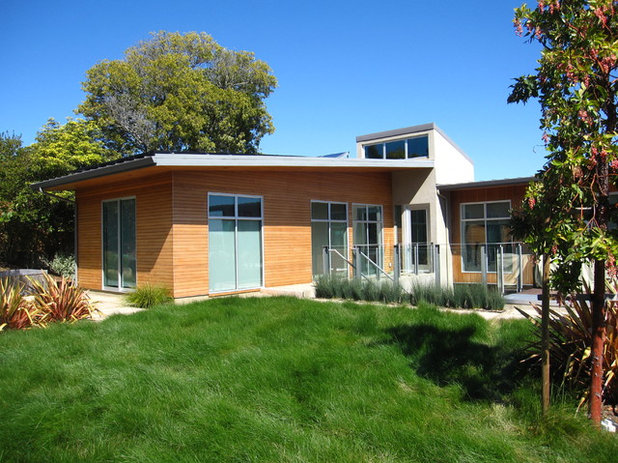
Shades Of Green Landscape Architecture
Lawn aeration and thatch. You may need to aerate your lawn to allow for some oxygen to reach the upper crust of soil. This will improve the soil tilth under your sod and is usually necessary if you have been using synthetic chemicals and fertilizers for several years.
One way to evaluate if your lawn and the soil below are acting as a healthy ecosystem is by looking at the amount of thatch collected under the grass blades. Thatch is the dead, brown grass blades that are meant to break down into the soil. There should be some thatch in your lawn, but not a buildup of more than 2 inches. A buildup means that your grass is not properly breaking down into the soil. Establish a healthy soil ecosystem and the thatch will begin to break down into the soil to feed your lawn.
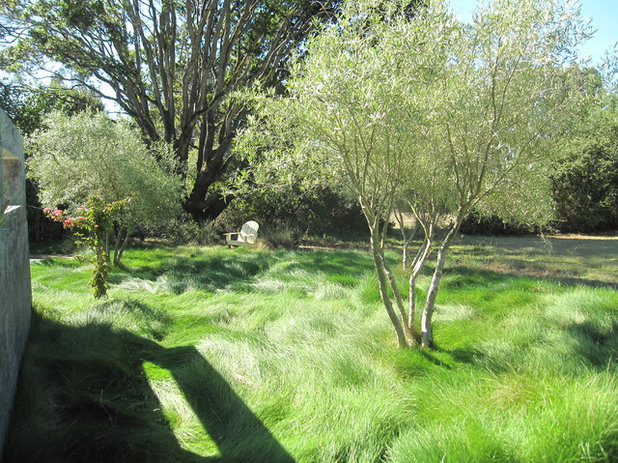
Kathleen Shaeffer Design, Exterior Spaces
Mowing. Mowing has a huge impact on the health of an organic lawn. Setting your mower to a higher height that allows the grass to grow longer will actually help shade out some weeds.
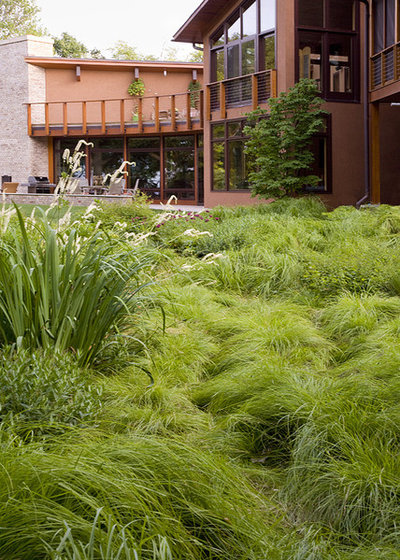
The Garden Consultants, Inc.
There are mixes of grasses called “no mow” and “low mow” that combine several species of grasses that perform and look great on an infrequent mowing schedule.
You also have the option of completely reworking your lawn into a short-grass meadow of sedges (the
Carex genus of grasses). Carex grasses that are native to your region can be densely planted and allowed to grow long to provide a very nice natural look. This type of alternative lawn has been growing in popularity as more gardeners are discovering the beauty of long grasses.
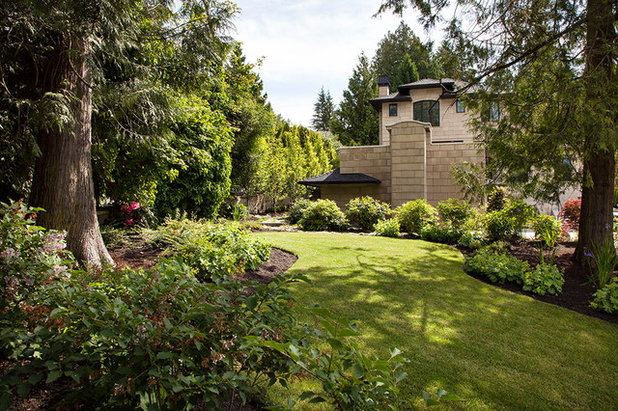
Swick's Organic Landscaping
Mulching your lawn. Let your lawnmower mulch the grass clippings. This means that the grass clippings are added back to the lawn to break down and feed the soil. For this to work properly, your lawn has to be able to break down organic material. Only start to mulch your grass clippings once you have aerated and established a healthy soil in your lawn, and there is only a small amount of thatch present.
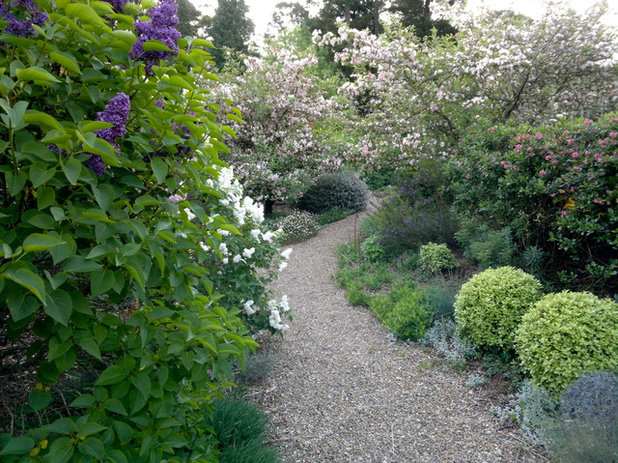
Arthur Lathouris Garden Designer
Trees and Woody ShrubsDo you regularly have a shrub that is diseased or a host to pests? One of the easiest ways to get a pest-free landscape is by using natives. Natives do not come under attack like the nonnative, ornamental varieties. You can add native plants yourself or do a major overhaul by working with a designer who specializes in native plantings. You can search Houzz to find landscape designers in your area.
The same principles for building healthy soil apply to trees and shrubs. Be sure to collect your leaves and clippings to add to the compost pile. Adding the dead organic matter to your pile, letting it decompose and then adding it back to your soil is a way to mimic the decay-growth cycle of nature.
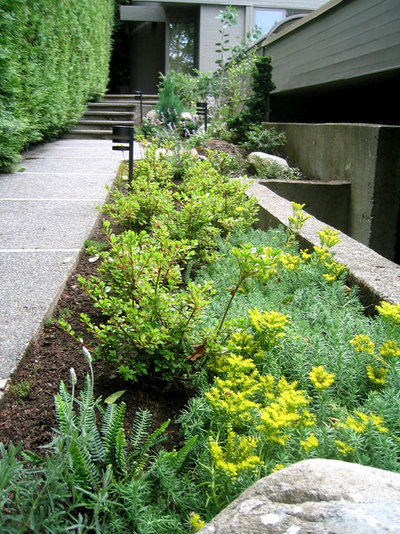
Swick's Organic Landscaping
WeedsWeeds are such a nuisance to the home gardener. Eradication of weeds can be a constant battle. The key is to be one step ahead of those pesky plants that sprout up in the most undesirable places. If you use a maintenance company, ask that the weeds be hand pulled or removed with hand tools so they are fully dug up.
5 Ways to Naturally Win the Weed War
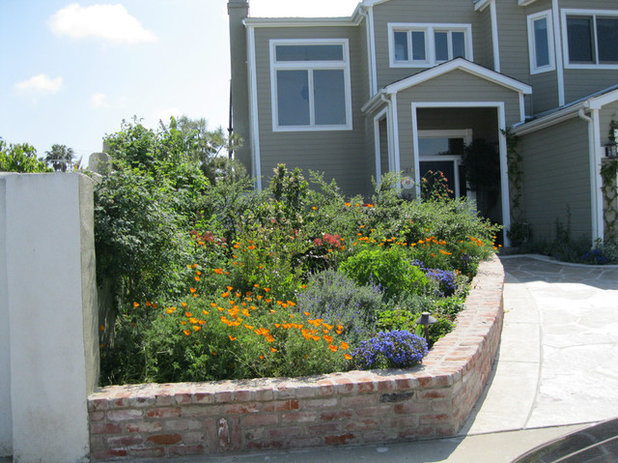
creations landscape designs
PestsIf you live in the Southeast, you are familiar with invasive fire ants, which thrive in full sun in nutrient-poor “disturbed” soils. Their mounds may dot your yard, and are commonly found at the edges near a street curb or driveway. Ridding your landscape of fire ants is possible, but it will take a long time, and the methods are specific to each pest. This is true for any aggressive critter.
There are many, many beneficial garden insects, too. Learn to differentiate between the good and bad. An influx of a pest is typically a sign of an imbalance in your landscape. Solve the imbalance organically and you may have fewer issues over time as your landscape becomes healthier.
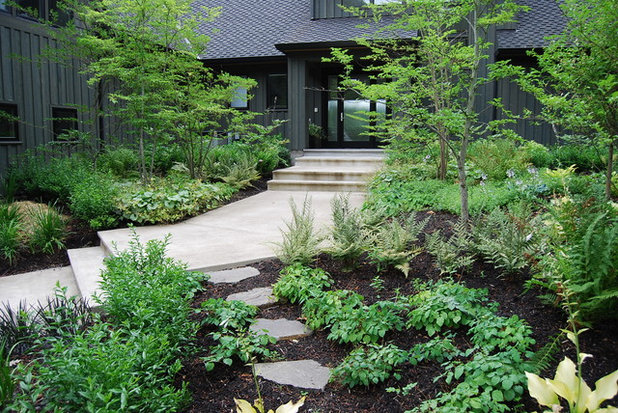
Samuel H. Williamson Associates
ProfessionalsTalk with your landscape maintenance company about switching to an organic plan. The lawn-mowing, weed-removing business is very competitive, and your hired company will want to keep you as a client. Communicate that you want to transition to an organic plan. If your current company is unable to provide organic service, find somebody else. Search for Houzz landscape contractor professionals using phrases like “organic lawn,” “ecolandscaping” and “sustainable landscape maintenance.”
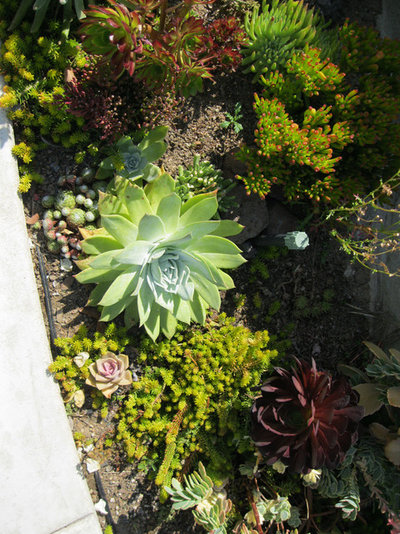
creations landscape designs
Landscapes and gardens are always a work in progress. There will be a give and take as you discover how to succeed with your garden organically. Rama Nayeri, owner of Creations Landscape Design, specializes in native plantings and sustainable landscapes in California. She says, “I believe that gardening is much like a science lab. You play around until you find the right combination.”
Your turn: How does your organic landscape grow? Tell us in the Comments.
More: Lay of the Landscape: Natural Garden Style





